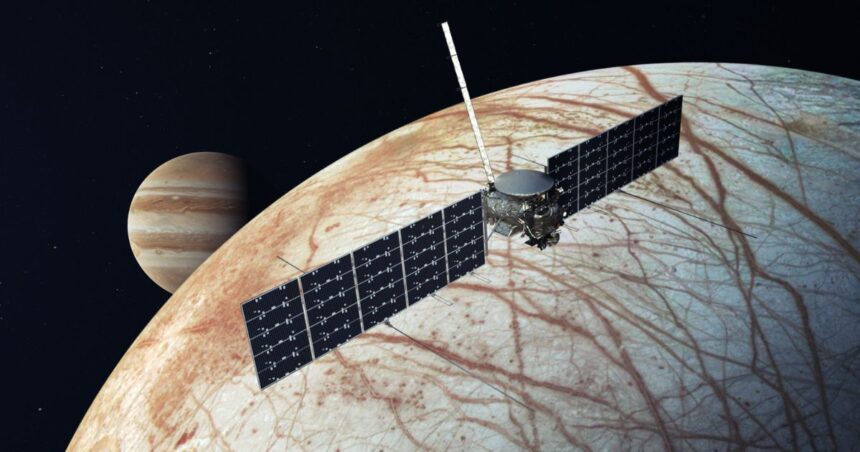NASA is ready for its new mission to Jupiter’s icy moon Europa. A spacecraft named Europa Clipper is set to launch on October 10, 2024. Icy moon Europa is a scientists choice for exploring extraterrestrial life. This mission aims to explore Europa’s potential habitability. On October 10, the Europa Clipper spacecraft will be launched from the SpaceX Falcon Heavy rocket from Kennedy Space Center, Florida.
What is the Europa Clipper Spacecraft?
Europa Clipper Spacecraft is a solar-powered spacecraft that will orbit the moon Europa. It is specially designed to study Europa. Clipper spacecraft will orbit Jupiter and make 50 flybys of Europa. Previous studies find that Europa has an ocean beneath its icy surface, and the ocean might have ocean life. During all its flybys, it will collect data from the moon and send it to scientists to understand its composition, geology, and potential for life.
Why Europa?
Europa is unique for investigation because it has an icy surface; below that, a huge ocean is present. Europa is one of Jupiter’s largest moons, and it is smaller than our Earth’s moon. Scientists are interested in Europa because it might have the right conditions for life.
The Mission’s Goals
The mission has three main objectives, but its primary aim is to determine the presence of life below the icy surface of an underground ocean.

First, it will analyze the moon’s surface and subsurface composition. Second, it will examine Europa’s geology, surface features, and tectonic activity. The last is to understand the ice shell and ocean. Spacecraft will study the thickness of Europa’s ice shell and the ocean beneath it.
Instruments on Board
Europa Clipper Spacecraft has a total of nine instruments to investigate the entire moon. These instruments include cameras, Spectrometers, and ground-penetrating radar. These instruments will help scientists gather detailed information about Europa’s surface and subsurface. The spacecraft’s radar antennas are mounted on its solar arrays. Radar antennas on solar arrays help to reduce obstructions and magnetic interference.
Europa Clipper spacecraft will use gravity to reach the planet Jupiter. It will fly by Mars and then back by Earth. This gravity will increase the spacecraft’s momentum and allow it to reach Jupiter by the year April 2030. Once it reaches Jupiter, the spacecraft spends an entire year altering its trajectory for the first flyby of Europa.
Challenges of mission
One of the biggest challenges for spacecraft is the harsh radiation environment around Jupiter. The spacecraft’s transistors, which control the flow of electricity, had to be tested regularly. NASA conducted many studies and confirmed that onboard transistors can handle the harsh radiation and it will support the mission.
This mission is important because it will provide valuable data about subsurface ocean life if present. The collected information could help scientists understand the conditions needed for life beyond Earth. It will begin future missions to Jupiter and its icy moons.




